
1. The Location and Structure of The Temple
2. Removing Your Footwear Before Entering Temple
Five senses of Human Body are sight, hearing, touch, taste, and smell. These are activated by the following actions in the temple:
3. Ringing the temple bell when you enter the temple – Hearing Sense Activated
4. Lighting Camphor in Front of Idol – Sight Sense Activated
5. Put your hands over the camphor flames and then touch eyes – Touch Sense Activated
6. Offering flowers to God at the temple – Smell Sense Activated
7. Drinking Theertham – Taste Sense Activated
8. Doing Pradakshina around the Garbhagriha/Moolasthanam
9. Applying Tilak/Kumkum given by the Temple Priest
10. Why offer Coconut and Banana to God when you visit Hindu temples ?
Our Ancestors had found this reality long ago and they had made it as a system which is still followed religiously.
Now let´s visit one particular temple, Chidambaram temple, dedicated to Lord Shiva in His Nataraja form. It is located in Tamil Nadu in the temple town Chidambaram. It is one of the five holiest Shiva temples, each representing one of the five natural elements (earth, water, air or wind, fire and ether or skies). All of the creation, including the human body, is made up of these five essential elements and upon death, the human body dissolves into these five elements of nature, thereby balancing the cycle of nature.
The Chidambaram Temple is in the heart of the city. It is one of the few temples where both the Shaivite and Vaishnavite deities are enshrined in one place, Lord Shiva Nataraja and Lord Govindaraja Perumal.
According to Shivaits Puranas when the Lord Shiva was in a happy blissful mood he took the form of Nataraja (Nataraj). He continuously dances in a state of eternal bliss “Aananda thaandava”, with his consort Sakthi called Sivagami, the other form of Him. In the course of ‘Anantha Thandava’ he took several other forms and created this Universe. He does this dance even now and takes new forms. For instance, Lord Shiva displayed his dance of bliss (the Aananda Thaandavam) to Pathanjali and Vyagrapathar. Sage Pathanjali wrote the famous Suthras that constitute the foundational text of Ashtanga or Raja Yoga.
Chidambara Rahasyam (Secret)
After 8 years of research and development, Western scientists have proved that at Lord Nataraja ‘s big toe is the Centre Point of World ‘s Magnetic Equator.
Our ancient Tamil Scholar Thirumoolar has proved this Five thousand years ago! His treatise
Thirumandiram is a wonderful Scientific guide for the whole world.
To understand his studies, it may need a 100 years for us.
Chidambaram temple embodies the following characteristics :
1) This temple is located at the Center Point of world ‘s Magnetic Equator.
2) Of the “Pancha bootha” i.e. 5 temples, Chidambaram denotes the Skies. Kalahasthi denotes Wind. Kanchi Ekambareswar denotes land. All these 3 temples are located in a straight line at 79 degrees 41 minutes Longitude. This can be verified using Google. An amazing fact & astronomical miracle !
3) Chidambaram temple is based on the Human Body having 9 Entrances denoting 9 Entrances or Openings of the body.
4) Temple roof is made of 21600 gold sheets which denotes the 21600 breaths taken by a human being every day (15 x 60 x 24 = 21600)
5) These 21600 gold sheets are fixed on the Gopuram using 72000 gold nails which denote the total no. of Nadis (Energy channels or subtle nerves) in the human body. These transfer energy to certain body parts that are invisible.
6) Thirumoolar states that man represents the shape of Shivalingam, which represents Chidambaram which represents Sadashivam which represents HIS dance !
7) “Ponnambalam” (Chidambaram) is placed slightly tilted towards the left. This represents our Heart. To reach this, we need to climb 5 steps called “Panchatshara padi ”
“Si, Va, Ya, Na, Ma ” are the 5 Panchatshara mantras.
There are 4 pillars holding the Kanagasabha representing the 4 Vedas.
8) Ponnambalam has 28 pillars denoting the 28 “Ahamas “as well as the 28 methods to worship Lord Shiva. These 28 pillars support 64 +64 Roof Beams which denote the 64 Arts. The cross beams represent the Blood Vessels running across the Human body.
9) 9 Kalasas on the Golden Roof represent the 9 types of Sakthi or Energies (loosely translated).
The 6 pillars at the Artha Mantapa represent the 6 types of Sashtras.
The 18 pillars in the adjacant Mantapa represents 18 Puranams.
10) The dance of Lord Nataraja is described as Cosmic Dance by Western Scientists.
Whatever Science is propounding now has been stated by HINDUISM THOUSANDS OF YEARS AGO !
Sources for Chidambaran temple: information received by mail
http://awesometemples.blogspot.com.es/2009_03_01_archive.html
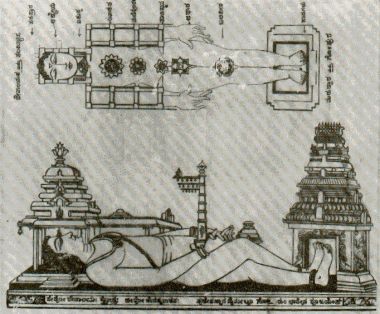

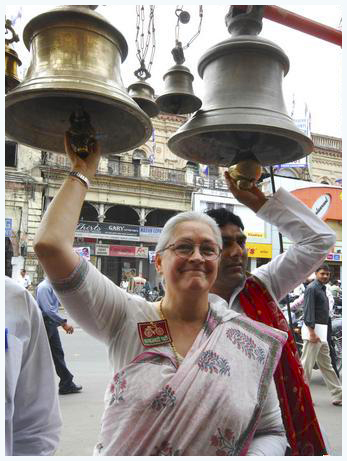

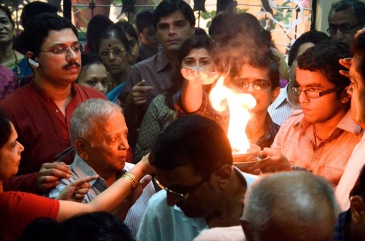
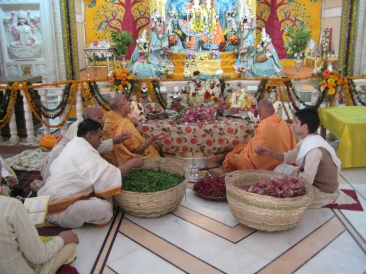



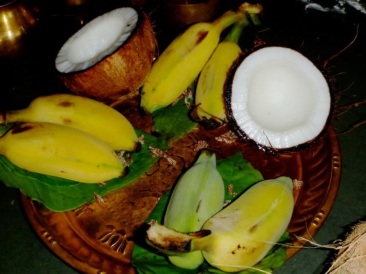




Very informative Maria ji. Keep it up 
Sent from Yahoo Mail on Android
From:”DurgaDharma” Date:Tue, 9 Jun, 2015 at 12:11 Subject:[New post] 25.Science and Sacredness in the Hindu temples
durgasiva posted: “Each and every gesture done in the Hindu culture has a deeper sense than the apparent. It should never be crossed out as superstition. All the hindu tradition is built upon a lifestyle that, from the smallest of the gestures to the biggest of the celebrat”
LikeLike
Thank you for your encouraging words. I wish I could do it better but if you find it at least worthy enough, please make your contacts know about it. It is just my humble attempt of gratitude towards Dharma.
LikeLike
I am really pleased to go through the contents of the entire paper. As I am a researcher of Guwahati University in the Folkore Research Department under the supervision of Dr Dilip Kr. Kalita, Director, ABILAC, Assam in this domain; I feel happy about the ideas contained in the paper. The title of my study is: The sacred Complex of Bilwswar Deavalaya: A Folkloristic Study. Bilweswar is an ancient Shiva Temple of Assam located at Belsor in Nalbari district.
LikeLike
Thank you Sir for participating in my blog. I am happy that this article has inspired you.
LikeLike